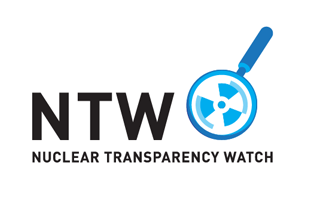Brussels, 11 March 2015 –The Fukushima nuclear disaster began four years ago. Although it was initiated by the great earthquake of East Japan and the tsunami that followed, responsible institutions have failed in recognizing the real risks of the reactors, in implementing appropriate nuclear safety standards and, ultimately, in protecting people. Has Europe taken into account all lessons to be learned from the Fukushima catastrophe? An upcoming NTW report identifies key challenges from the civil society point of view.
4th anniversary of Fukushima – has Europe learned anything? NTW says no. Emergency preparedness is mostly based on an INES 5 nuclear accident and response plans generally cannot cope with an INES 7 accident, the level of the Chernobyl and Fukushima catastrophes. NTW notes that many regional and local authorities are not really prepared for a nuclear accident. In some cases, it seems that EP&R plans have been drafted a long time ago with poor updating regarding important recent spatial changes (new residential neighbourhoods, shopping malls, medical centres, schools, roads, etc.) and without taking into consideration recent changes in technology (internet, mobile phones, new social media, etc.). NTW notices that even during exercises, the communication and notification lines of the responsible institutions are not entirely working as necessary: contact data are sometimes wrong or out-dated, there is a lack of communication between different concerned administration services and warning messages are sometimes no clear or too late.
The heterogeneity of measures in different countries (like the distribution of iodine tablets, evacuation perimeters and zoning) is a crucial transboundary dimension. This heterogeneity is potentially a source of chaos, loss of credibility and, most importantly, of potential failure to protect the population. “European institutions are now debating a new directive on the radioactive contamination of food and feedstuff after an accident to harmonize norms. The chaos we saw in this respect in the EU after Fukushima should indeed never be repeated. But while safety agencies recognize that an accident can happen in Europe, accepting contamination norms that are twice the one of Fukushima is from public health perspective unacceptable”, said Michèle Rivasi, chair of NTW.
NTW’s assessment makes obvious that the usual top-down approach doesn’t work. This approach, which has been used to date in EP&R, should be changed and should involved local communities and interested civil society organisations to take an action to improve the situation. “EP&R provisions today are resulting from closed door discussions. Citizens and citizens’ organisations should be the principal partners in EP&R since they are the ones who are affected in a nuclear event. We need to encourage sharing of information among people and institutions, and to involve the local population in the development of better provisions and systematic transboundary arrangements”, said Nadja Železnik, chair of WG EP&R from NTW.
NTW urges the European Parliament, the European Commission, national governments, regional bodies and municipalities, together with nuclear operators, to provide access to relevant information and to support participation of interested citizens, citizens’ initiatives and civil society organisations in emergency preparedness and response planning, regardless of their general position on the commercial use of nuclear power.
The report will be published in April 2015 during a presentation in the European Parliament. Please find enclosed its executive summary: NTWexecutiveSummaryEP&R

